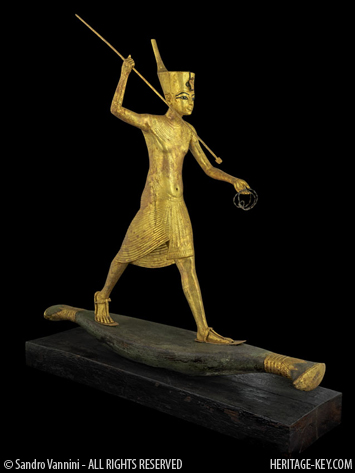 Nazi Egyptology is a complex subject. As Professor Thomas Schneider said, there is no uniform ‘Nazi Egyptology’ discipline. Instead there are a number of German Egyptologists who were thrown into the academic hole of the Third Reich – who each reacted to it in their own way.
Nazi Egyptology is a complex subject. As Professor Thomas Schneider said, there is no uniform ‘Nazi Egyptology’ discipline. Instead there are a number of German Egyptologists who were thrown into the academic hole of the Third Reich – who each reacted to it in their own way.
An interesting story that I didnt put into the article The Real Story of Nazi Egyptology, forbrevity reasons, is that of Friedrich Wilhelm von Bissing. Bissing was a professor at Munich. He is perhaps most noted for his work at Abu Ghurab, done at the turn of the century, where he excavated the sun temple of King Niuserre.
Professor Schneider writes that Bissing was a deeply religious man who was torn between his faith and National Socialism, concerned about the increasing number of repressive actions exerted by the Nazis.
In July 1945, George Steindorff, an Egyptology professor at Leipzig, who had been forced to flee to the United States, wrote that Bissing:
Joined the Nazi party in its beginning. He was a very good friend of Rudolf Hess, to whom he dedicated his History of Egyptian Art. He was decorated by Hitler with a golden party-symbol, but later he sent it back and left the party.
 After the pogrom he came personally to see me to show his sympathy and was very sorry not to be able to improve my situation with the help of his former party-colleagues. Belonging to an old Prussian family, a grandson of Mathilda Wesendonck, a man of great culture, he detests the low level of the Nazi ideology. However, he is very nervous and hysterical and not young enough to play much further part in politics.
After the pogrom he came personally to see me to show his sympathy and was very sorry not to be able to improve my situation with the help of his former party-colleagues. Belonging to an old Prussian family, a grandson of Mathilda Wesendonck, a man of great culture, he detests the low level of the Nazi ideology. However, he is very nervous and hysterical and not young enough to play much further part in politics.
This relationship between Bissing and Hess is interesting in itself. In 1933, when Hitler came to power, Hess was deputy leader of the Nazi party. He had an interest in the occult, something that may have made him gravitate to the Egyptologist. Like Bissing he supported Nazism at first, but turned against it later, defecting to Britain in 1941.
Bissings break with Nazism came on September 18, 1934, almost 75 years to this day, in an almost Hamlet-like episode.
Professor Schneider writes that,
He wrote a letter of complaint about what he considered to be the abandonment of the true values of National Socialism (that was) directed to a representative of the Catholic church and confidant of Adolf Hitler, Abbot Schachleiter.
 Bissing wrote to Schachleiter that:
Bissing wrote to Schachleiter that:
What one misses is a feeling of responsibilty on the part of the Fhrer who totters like the blind man in the painting of Brueghel. (…) People say that he suffers from incurable megalomania.
Adding…
Satan has grabbed hold of him, God alone can help!
Bissing was kicked out of the Nazi party shortly thereafter but was spared further punishment. Hess tried to help Bissing get reinstated in the party to no avail.
Hess, would of course become a household name in 1941 after he defected to Britain. He did it by flying a plane to Scotland saying, when he landed,that he was in Britain to negotiate a peace. After the war he was tried as a war criminal and spent the rest of his life in jail, committing suicide in 1987.
Bissing survived the war and died in 1956. His removal from the Nazi Party, which was spurred by his letter, helped keep his reputation(at least to some degree)intact.
Scholar Thomas Beckh has published a book about Bissing and his work, available in German.



